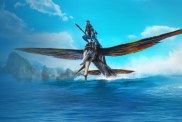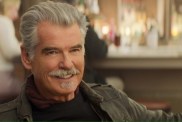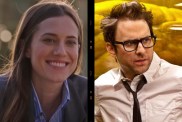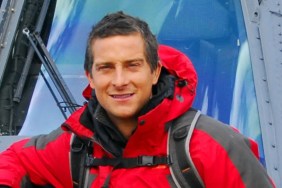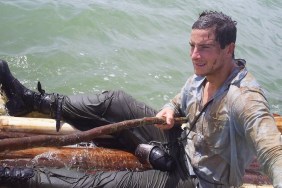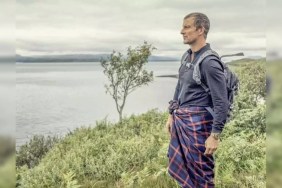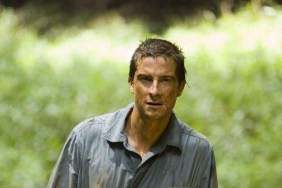In 1996, Jon Krakauer published the bestselling non-fiction book “Into the Wild,” which relates in-detail the experiences of one Christopher McCandless, a young man fresh out of college who decided to donate his entire $24,000 life-savings to OXFAM, abandon his car/home/identity/family, and live by his own means backpacking and tramping across the country under the name Alexander Supertramp. Two years later, in September of 1992, he was found dead of starvation inside an abandoned bus in the middle of the Alaskan wilderness.
Far more extraordinary and shocking than McCandless’s decision to drop out of society and his tragic death is the story of what happened in between. This is the rugged territory covered by screenwriter/director Sean Penn in his new film, which adapts and takes its title from Krakauer’s book. Into the Wild depicts McCandless, portrayed by Emile Hirsch, as a restless searcher questing from one fresh experience to another, be it working the land for a rascally farmer named Wayne (Vince Vaughn), hitching a ride with a hippy couple (Catherine Keener & Brian Dierker), or befriending a lonely old man named Ronald Franz, played by veteran actor Hal Holbrook.
This quest ultimately disconnects Chris from his parents (William Hurt & Marcia Gay Harden) as well as his younger sister Carine (Jena Malone). Carine’s narration throughout the film attempts to explain the domestic turmoil at home which may have been the impetus for Chris to set out on his journey, and how the turmoil turned to grief when he left them behind. When we talked to Emile Hirsch recently in New York, he discussed his own speculations on what drove the real McCandless, and the personal motivations which Hirsch himself imbued into the character.
“It was a spirit of adventure that I felt in my life,” he said with great conviction. “I know what wanting and craving adventure feels like, I can really relate to that. When you combine that with a lot of pain and a need to seek love, even if I didn’t agree with the decisions he made I felt that I understood why he made them. In one of the letters Chris wrote Ronald Franz, he writes, ‘The core of man’s spirit comes from new experiences.’ I think he really believed that and thrived off of those experiences and the sense that he was living his life going forward, continuously seeing new things.
“I think that he would like the inspiration that people will draw from the movie. I think he would really appreciate that as someone who wanted to change the world since High School. He would go to downtown Washington DC and buy McDonalds and hand them out to homeless people, try to help them, on his own, on a Friday night. What I don’t think he would like is seeing his parents and sister in so much pain onscreen.”
The film is as immersive an experience as you are ever bound to find, as we follow Chris through virtually the entire expanse of America. We go from the rapids of the Colorado River to the impoverished slums of downtown Los Angeles, and ultimately to the mountains and snowy forests of Alaska where he met his fate after severe food poisoning crippled him with sickness. He travels by hitching rides with strangers and on the boxcars of freight trains, and even his own canoe. As one would imagine, the filming of this would be an adventure in and of itself.

Said Hirsch, “We were in all different types of climates and each climate brought a different challenge. It would be really cold in Alaska, climbing a snowy mountain one day, snowmobiling around. Me and Sean, on the first day actually, flew off our snowmobile together, on the first day! We’d be around Lake Meade when it was like 120-somethin’ degrees. One of the guys got heat stroke, just vomiting and had to quit the whole film.”
“As much as the physical training was really important, of running and weightlifting and hiking, there was also a mental exercise, reading a lot at rigid hours, always reading everyday. Whether it would be Jack London’s ‘Call of the Wild,’ or Henry David Thoreau and Walden and getting into that whole world. That kind of mental discipline would prove to be important throughout the whole shoot. When you’re reading about the world in a different way than which you’re accustomed to seeing it, it kind of expands your mind a little bit, I think. It definitely had me look at who I was in a different way and the world I’m in, even the world of LA and Hollywood. When you’re reading Thoreau you look at Hollywood differently, let me tell ya!”
“I always marveled at how self-reliant McCanles was,” Hirsch continued. “He’s a guy who could find his own food. He could hunt and fish and take care of himself completely, and not just in a ‘modern society take care of yourself’ way like ‘okay, go do your laundry, you live in your apartment on your own, clean your apartment.’ The Alaskan wilderness is much different! I’m in awe of that kind of resourcefulness. At the bus when I was physically making the shower, feathering the birds you’re like ‘wow, this guy worked a lot.'”
The 22 year-old actor, who has made a name for himself with iconoclastic lead roles in films like Lords of Dogtown and Alpha Dog, and who will be playing the title role in next summer’s blockbuster Speed Racer, was very forthcoming about his director, fellow actor Sean Penn.
Emile said of Penn, “He gave me so much freedom, more freedom making the film than I could ever imagine having as an actor. I think that’s the way he would want to be treated in that situation, and I think that’s the way he thinks you get the best work out of people too, particularly actors, giving them a lot of freedom. So I was overjoyed making the film ’cause it was working a way I’d never worked before. It was awesome!”
Penn, who won an Oscar in 2004 for his role in Mystic River, also inspired admiration in 82 year-old Hal Holbrook, who became a legend onstage for his one-man show “Mark Twain Tonight,” and is best remembered on-screen for his role as the enigmatic Deep Throat in 1976’s All the President’s Men. In Into the Wild Holbrook plays Ron Franz, a lonely man whose family was killed in a tragedy, and who is taken as much under Chris’s wing as Chris is taken under his. The two form a mutual bond and inspire each other to have courage in taking life by the horns. Holbrook, still energetic and sharp, described working with Penn as a rewarding experience that changed his perception of the actor.
“Working with Sean was a lovely experience,” said Holbrook. “He was so sensitive, thoughtful, kind. I’d never been treated with more kindness. As a director directing you in the show, you get a feeling the man trusts you. He doesn’t tell you what to do. He hardly seems to direct you at all! He apparently picked you for some reason and lets you go.”

“There was one major time in this movie where he directed me away from what I was doing. It was the dinner table conversation with Emil about my family getting killed back on New Year’s Day when I was in Okinawa. As an actor I saw that speech and thought, ‘This is the killer speech, this is where I tell them what a sad life this guy had. I’ll knock ’em dead with this.’ I tried to do it as well as I could and be subtle, but I basically wanted the audience to know how pained this man was, what a loss he carried. It seemed to connect with his increasing interest in this young boy, especially when he realizes the boy’s risking his life beyond the usual.”
Holbrook continued. “I did it a couple times and Sean stopped me. He came over to me and says, ‘You know, I was in a bar once talking to some guy, he’d had a few drinks, and he was tellin’ me how his family, wife, kids were killed, you know?’ He was laughing. Like (smiling) ‘Yeah you know, I dunno, it was like, uh, February 11th, somthin’ like that, I dunno, geez. (laughs) You know, they just, yeah, some guy came along and killed ’em, you know right on the street, wiped ’em out and (laughs) you know, and killed ’em right there. (chuckles)’ And I realized that was a wonderful piece of direction because people cover up their pain. It’s a wonderful piece of direction. He didn’t tell me what to do, he just gave me a little example.”
“I had no idea that he was SAVIN’ IT, he was saving this man’s pain for that last scene where he says goodbye to Chris. See, I mean a guy has to have a vision of what’s going on to do something like that. I didn’t realize at the time how smart this young man is, Sean Penn. I think of him as a young man, I knew him as a twenty-year-old boy on a movie. First movie he ever did [“The Killing of Randy Webster”, 1981] was a movie I did with my now-wife Dixie Carter. He had a little tiny part and I took a great interest in him ’cause I thought he was very talented.”
In the farewell scene he mentions, where Franz is dropping Chris off right before he embarks on his Alaskan adventure, there is a palpable sense conveyed by Holbrook in his performance that he does not want Chris to go. It is a paternal instinct, punctuated by Franz asking Chris if he’d like to be adopted by him when he returns, to which Chris simply walks away. Although it’s very touching to speculate, Holbrook insists from experience that he knows the driven McCandless would never have been able to settle down like that.
“I don’t think Chris was ever going to stay with this man or anybody else. I don’t know if any of you have gone off and risked your life somewhere on an adventure. Try to climb a mountain, sail a boat across the ocean alone without any radio. Well I have you don’t go climb a mountain, you don’t go and sail a boat around the world if you’re gonna stop and reconsider. You can call it arrogance, but it’s a purpose. You do not stop. That’s why I think it’s so terrific how this boy leaves everybody, including me! Puts that pack on and starts walkin’ away! He walks away. It seems cruel to a lot of people, but this boy is leaving because he’s going somewhere.”
Into the Wild opens this Friday, September 21, in New York and Los Angeles, followed by a wider release on October 12.
